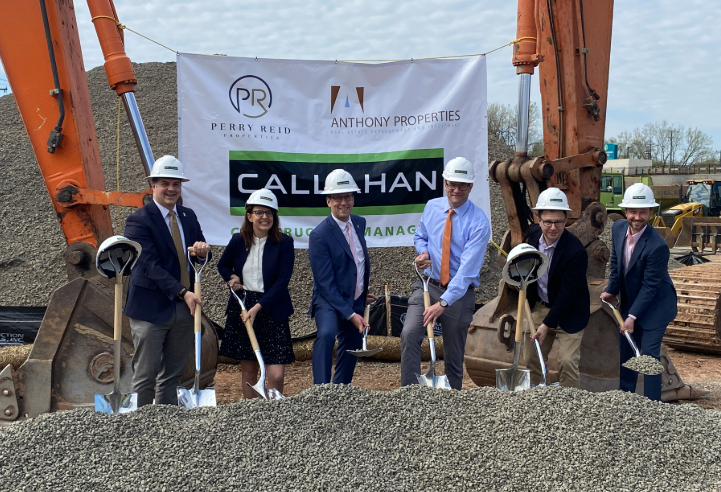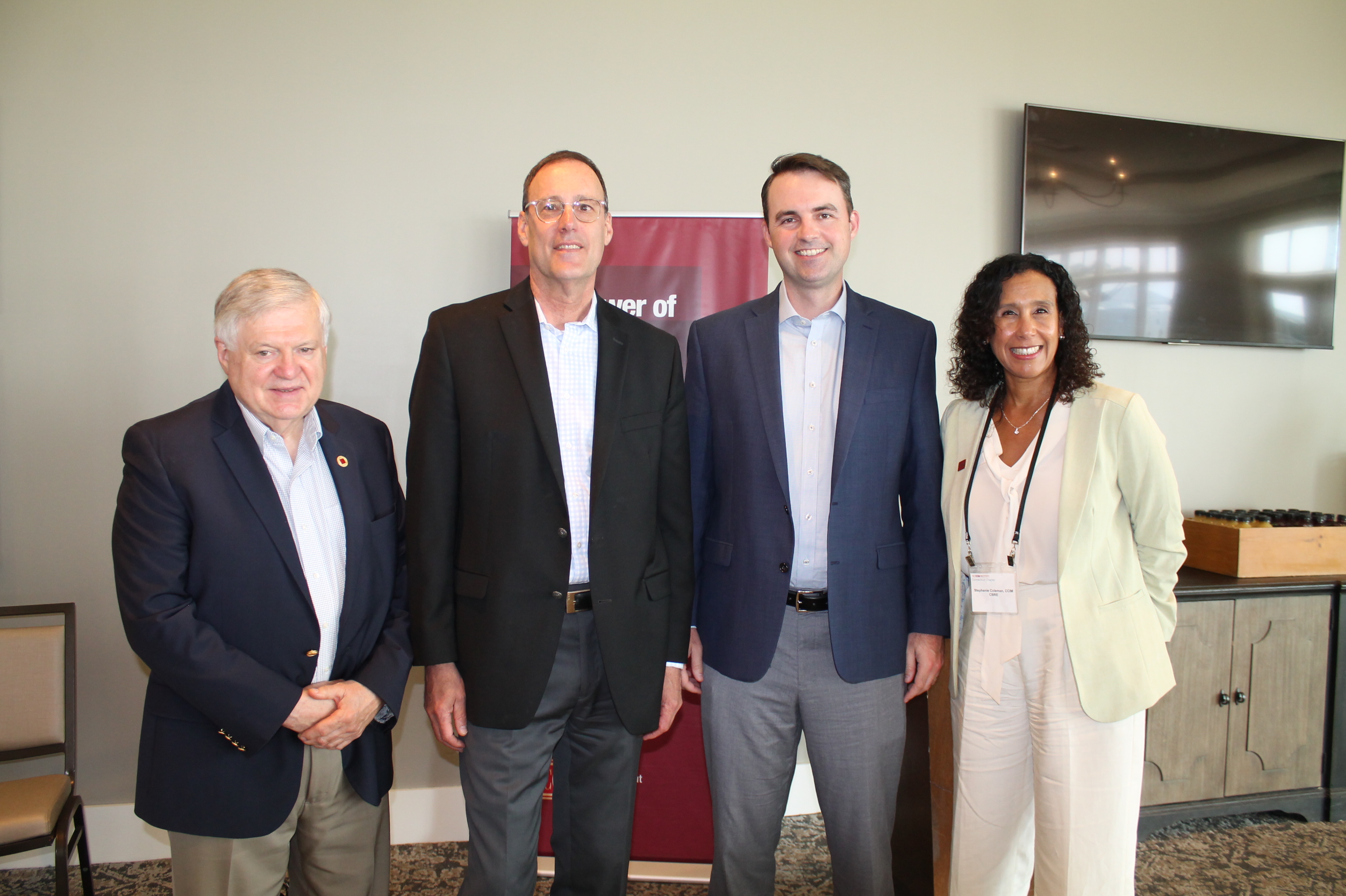Construction Institute hosts 7th annual Visionaries Forum
 Shown (from left) are: Burdi, Rundell, Merlino and Luth
Shown (from left) are: Burdi, Rundell, Merlino and LuthThe success of the AEC industry requires looking into the future and thinking about how we plan for and incorporate an array of impressive new technologies into what we are doing now. On April 21st, the Construction Institute welcomed four visionaries at the cutting edge of technologies and processes to speak at our 7th annual Visionaries Forum and share with us the ways that they are bringing the future to life.
Rich Merlino of Addaero Manufacturing, LLC captivated the audience with a presentation of the current application and future capabilities of additive manufacturing for industry and construction.
Rick Rundell of Autodesk BUILD Space, spoke about reality computing, digital fabrication, and design robotics and described the unique collaborative research center for the building industry that is being constructed in South Boston.
Luciana Burdi, deputy director for capital programs and environmental affairs for the Massachusetts Port Authority is leading the shift of capital programs towards more innovative, progressive Building Information Modeling (BIM) and design technology driven departments, incorporating lean construction concepts. She described the ways in which the Authority has incorporated new technologies and approaches to create an integrated approach to vertical and horizontal construction.
Greg Luth, professional engineer and the president and founder of Gregory P. Luth & Associates, Inc. of Santa Clara, California, is a pioneer and industry leader in the development and application of the 21st century technologies and processes including High Definition (HD) BIM and Performance Based Design in an integrated delivery process. He discussed the incredible advantages of a fully integrated collaborative approach, incorporating BIM from the outset of a project.
David AuCoin, BIM director at PES Structural Engineers, and co-chair of the Construction Institute’s BIM council, has noted in many council meetings that technology alone cannot solve the industry’s challenges. This year’s CI Visionaries gave us a roadmap for the integration of new technologies into effective processes and relationships among project participants.
The core of the Construction Institute’s mission is to promote cross-industry collaboration and bring the value of team integration with the best uses of technology to enhance quality, reduce costs and waste, and contribute to the long term success of projects over their lifecycle, while improving the end user experience. To learn more about the Construction Institute, go to http://construction.org.
Nancy Greenwald is executive director of The Construction Institute, Hartford, Conn.
Highcap Group brokers $41.1 million sale of two building multifamily portfolio
Norwalk, CT Highcap Group has completed the sale of two luxury multifamily properties with a total of 120 units for a combined purchase price of $41.4 million.








